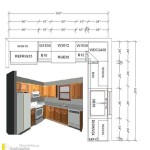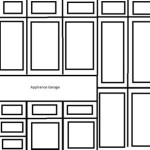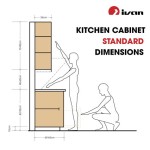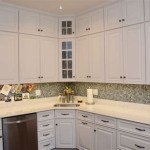Open Plan Kitchen Extension Cost: A Comprehensive Guide
An open plan kitchen extension is a popular choice for homeowners seeking to improve their living space and create a more sociable atmosphere. This type of extension seamlessly connects the kitchen with the living or dining area, maximizing space and enhancing the flow of the home. However, the cost of an open plan kitchen extension can vary significantly depending on several factors, including the size of the extension, the materials used, and the complexity of the design. This article provides a comprehensive guide to understanding the factors that influence the cost of an open plan kitchen extension, along with key considerations to help you budget effectively.
Factors Influencing Open Plan Kitchen Extension Cost
The cost of an open plan kitchen extension is determined by a multitude of factors, each playing a distinct role in the overall expense. Understanding these factors is crucial for accurate budgeting and planning. Here are some of the key elements that influence the price:
1. Size and Scope of the Extension
The size of the extension is a primary driver of cost. Larger extensions naturally require more materials, labor, and structural work, leading to a higher price tag. The scope of the extension, encompassing the features and functionalities desired, also plays a significant role. For instance, adding a new roof, windows, or doors increases the overall cost. Thoroughly planning the desired size and scope of the extension is essential for establishing an initial cost estimate.
2. Materials Used
The materials used in the construction of the extension have a direct impact on the cost. High-quality materials, such as premium timber frames, engineered stone countertops, and bespoke cabinetry, will inevitably lead to a higher price. Conversely, using more affordable materials like brick, laminate countertops, and standard cabinetry can help reduce the overall cost. Consider the desired aesthetic and longevity of the materials to make informed decisions that align with your budget.
3. Design Complexity
The complexity of the design can significantly influence the cost. A simple rectangular extension with standard features will generally be less expensive to construct than a complex, multi-level design with intricate details. Factors such as vaulted ceilings, structural beams, or custom staircases add complexity and contribute to higher costs. Careful consideration of design elements and their impact on the budget is essential during the planning process.
4. Location and Access
The location of the property and access to the site can influence the cost of the extension. Properties located in urban areas or with limited access may incur higher costs due to potential logistical challenges and increased labor expenses. Similarly, the availability of utilities, such as electricity, gas, and water, at the extension site can also impact the cost. Consulting with local contractors to assess site conditions and potential costs is recommended.
5. Planning Permission and Building Regulations
Obtaining planning permission and complying with building regulations can add to the cost of an open plan kitchen extension. The complexity of the application process and potential requirements for structural modifications or drainage systems can influence the expense. Consulting with a qualified architect or structural engineer can help navigate these regulations and minimize associated costs.
Key Considerations for Budgeting
Budgeting for an open plan kitchen extension requires careful planning and consideration of various factors. Here are some essential considerations to help you manage costs effectively:
1. Set a Realistic Budget
Establish a clear and realistic budget for the entire project, considering all aspects of the extension, including materials, labor, fixtures, and appliances. It's advisable to allocate contingency funds for unexpected costs that may arise during construction.
2. Get Multiple Quotes
Obtain quotes from multiple reputable contractors to compare prices and services. This allows you to identify competitive pricing and understand the range of options available. Remember to carefully review the quotes and ensure they include all relevant elements of the project, including the scope of work, materials, and labor costs.
3. Prioritize Key Features
Prioritize the key features of the extension that are essential to you and focus your budget on those elements. Consider prioritizing areas such as the kitchen cabinetry, countertops, and appliances, while exploring more cost-effective options for less critical features like flooring or window treatments.
4. Explore Cost-Saving Options
Explore cost-saving opportunities throughout the project, such as using recycled or reclaimed materials, opting for standard fixtures and appliances, and considering DIY tasks within your skillset. By implementing strategic cost-saving strategies, you can achieve your desired vision without exceeding your budget.
Conclusion
The cost of an open plan kitchen extension is a significant investment that requires careful planning and budgeting. By understanding the key factors that influence the price, considering key considerations, and implementing cost-saving strategies, homeowners can achieve their desired vision while managing expenses effectively. With thorough research, realistic expectations, and professional guidance, an open plan kitchen extension can enhance your living space and create a beautiful and functional environment for years to come.

Kitchen Diner Extension Cost In 2025 Checkatrade

How Much Does A Kitchen Extension Cost Plus Rooms

Kitchen Extension Cost In The 2024

Kitchen Diner Extension Cost In 2025 Checkatrade

Ultimate Guide To Kitchen Extensions 2025 Devis Architecture

Kitchen Extension Cost How Much Is A

Kitchen Extension Cost How Much Is A

A Window Into Open Plan Kitchen Extensions

House Extension Cost In 2024 Your Complete Guide To Costs

Kitchen Extension Costs What We Were Quoted Fifi Mcgee
Related Posts








